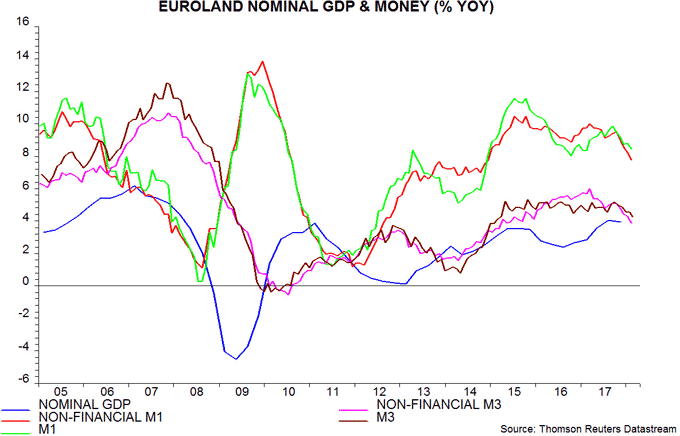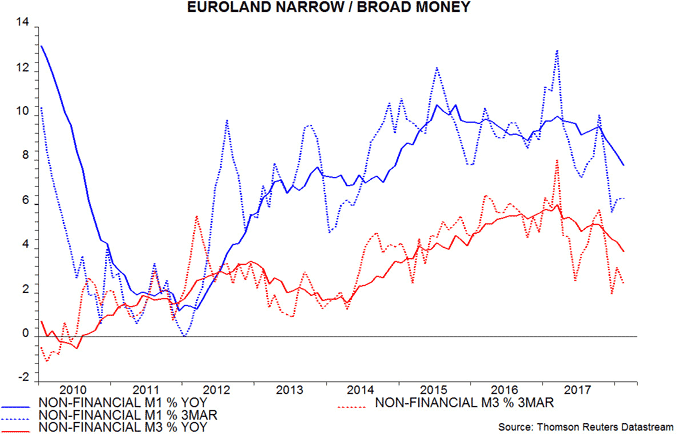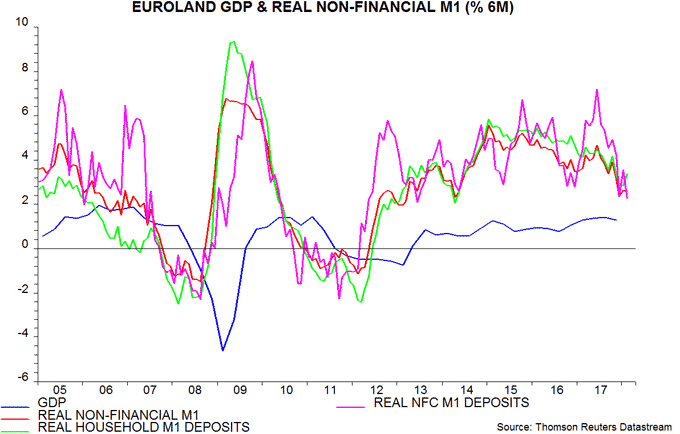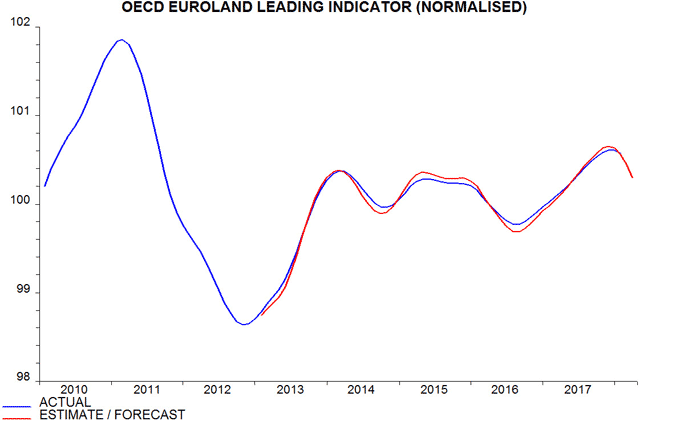Euroland economic prospects still deteriorating
Euroland monetary trends and the OECD’s composite leading indicator continue to soften, suggesting that a recent economic slowdown will extend through late 2018, at least.
Annual growth rates of the headline M1 and M3 money measures fell to 8.4% and 4.2% respectively in February, extending a decline from peaks in September 2017 of 9.8% and 5.2% respectively. The preferred narrow and broad aggregates here are non-financial M1 and M3*, reflecting their superior historical forecasting performance. These measures have slowed more significantly, with annual growth down to 7.8% for non-financial M1 and 3.9% for non-financial M3 in February, the lowest since 2014-15 – see first chart.

Shorter-term trends suggest that annual growth rates will subside further. Non-financial M1 rose at an annualised rate of 6.3% in the three months to February, with non-financial M3 growing by only 2.4% – second chart.

The third chart shows six-month growth of real (i.e. deflated by consumer prices) non-financial M1 and household / corporate components. Aggregate growth is back around its level in late 2012 through early 2014, following which GDP grew at an annualised rate of 1.0-1.5% – well below current consensus and ECB forecasts. Corporate holdings have slowed particularly sharply in recent months and exhibited a stronger correlation with future GDP than household holdings historically, according to ECB research.

The ECB publishes a country breakdown of overnight deposits, which account for more than 80% of M1. Six-month growth of real deposits has fallen steeply in France and Spain since August-September 2017, converging with sluggish German expansion – fourth chart. Recent weaker French business surveys are consistent with the monetary slowdown and suggest that President Macron’s economic honeymoon period has ended. Italian real deposit growth, surprisingly, held up through February but increased policy risk following this month’s election could lower confidence / spending intentions and encourage capital flight, thereby weakening monetary trends.

The OECD’s Euroland composite leading index, which typically lags monetary trends by several months (and excludes money measures), confirms softer economic prospects. The normalised version of the index is estimated to have declined again in February, with a further reduction projected for March – fifth chart**. The normalised index is designed to predict GDP relative to trend, so the shift from rising to falling suggests that recent strong growth will give way to below-trend expansion.

*Non-financial = covering holdings of households and non-financial corporations (NFCs), i.e. excluding financial sector money.
**The OECD is scheduled to release a February reading on 10 April but most of the component information is available, allowing an independent calculation.

Reader Comments